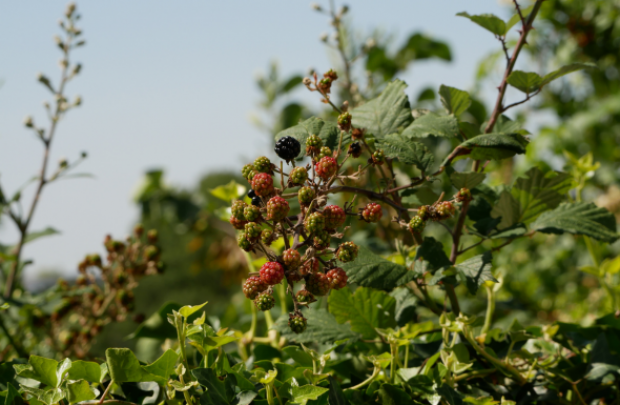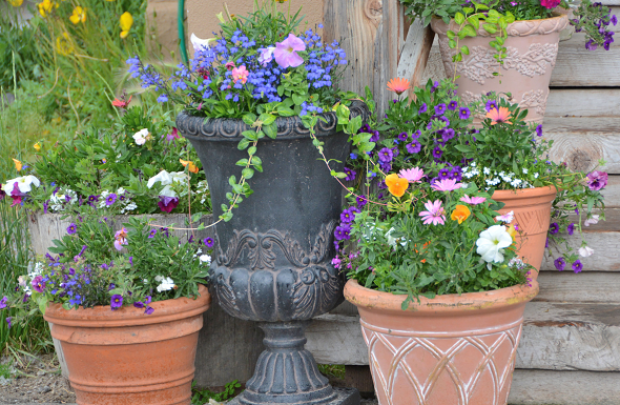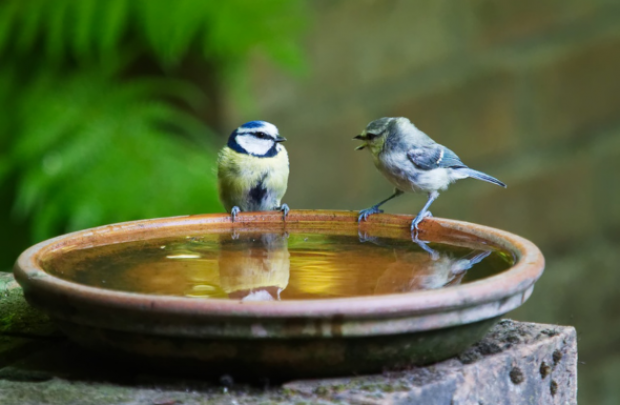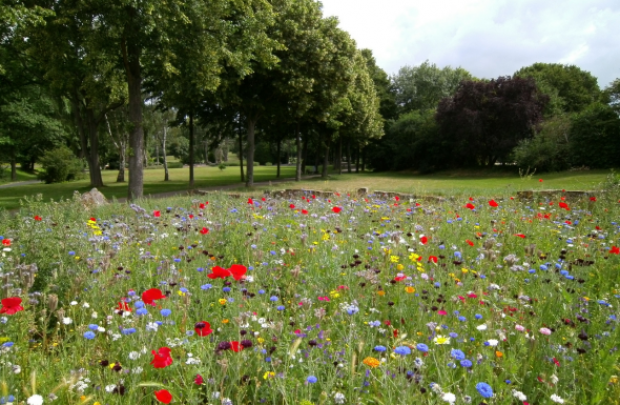Of beans and badgers – celebrating wildlife as part of National Allotments Week
Organised by The National Allotment Society, this year’s National Allotments Week is all about bugs, bees and broccoli and “acknowledges the importance of gardening with nature in mind.” Our Communications Coordinator, Sophia, shares some impressions from a community allotment in North Oxfordshire, which is currently undergoing a wildlife-friendly makeover.
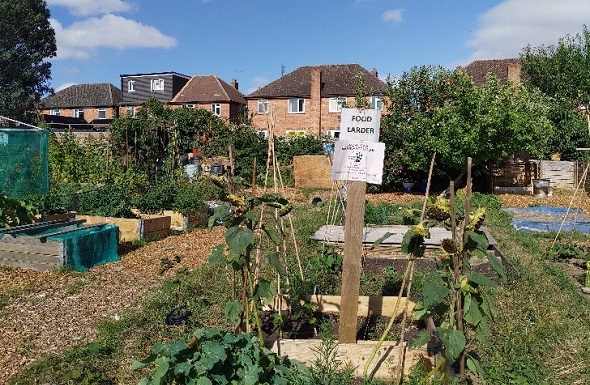
One of the allotment plots looked after by the volunteers of Harvest at Home in North Oxfordshire
Allotments for all!
An allotment is a plot of land divided up in sections which are rented to individuals or – in this example – a community organisation, for the purpose of growing fruit and vegetables.
The health benefits of connecting with nature and eating a varied diet including plenty of fruit and vegetables are widely known. Unsurprisingly, the interest in allotments soared during the coronavirus pandemic. “There are an estimated 330,000 allotment plots in England – the vast majority of which are the responsibility of local councils – while the National Trust has also provided many sites.” (Source: The Guardian, 2020).

A bumblebee busy with “harvesting” in the allotment
Why wildlife should be welcome in our allotments
Most allotments focus on food-growing, but you may also find flowers or other plants. Allotments make an important contribution to supporting wildlife in urban areas. They are fantastic places for many citizen science related activities, such as bee, butterfly and bird recording.
Some allotment owners may not be particularly fond of their wild visitors. It certainly is disappointing to see the remains of your bean plant dug out by a nocturnal animal (I blame the badgers!) just a few days after planting it. And the sight of large white butterflies fluttering around cabbage can be the opposite of delightful – if it’s your own crop under attack.
However, there are good reasons why we should accept that “sharing (with wildlife) is caring” – and learn to value the benefits instead of focusing on the negative.
Many insects such as bees and butterflies are vital pollinators. Other species such as slow worms and toads can act as a natural pest control, preying on slugs and other garden pests. Ladybirds control aphid populations. Worms are little composting heroes.

One of the toads spotted in the allotment
Resilient weeds and memorable wildlife encounters
Last summer, I joined a community action group called Harvest at Home which is “fighting food poverty from the ground up” by providing garden kits, seeds, seedlings and guidance to community members keen to grow their own produce.
I became part of a group of volunteers looking after an allotment in North Oxfordshire. When I joined, my first impression was that it’s definitely a “wild” space. Fruit and vegetables seemed to be outnumbered by the great variety of weeds thriving there.
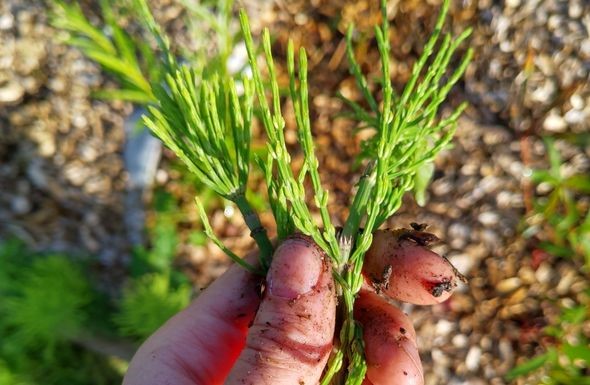
Horsetail making allotment life difficult
The other volunteers were quite honest about the horsetail “infestation” in this plot. Horsetail (often called mare’s tail) is a deep-rooted perennial invasive plant that will spread quickly in beds and borders, blocking out all other plants. It can easily be recognised by its upright, fir tree-like shoots. Getting this weed under control will test your patience and self-discipline!
One of the attempts that had been made to suppress this weed in our allotment was a large sheet of tarpaulin spread over parts of the soil. When a fellow volunteer lifted it to show me where I could potentially start growing my own vegetables, a brown snake-like creature slithered out. “Hello little slow worm!” It was the first time that I had seen one of the legless lizards in real life. And yes, I wrongly did think it was a snake.
During my next allotment visits, it turned out that this sheet of tarpaulin was also a popular hiding place for toads. One of them crawled out to witness my sweat-inducing struggle with the horsetail, not easy to spot due to its impressive camouflage skills! I read the expression in its grumpy face as something along the lines of: “And here’s another silly human battling nature rather than working with it. Will they ever learn?”

Partly munched apples on the ground - wildlife was here!
Gardening in balance with nature
These wildlife encounters triggered an ongoing conversation about how we could develop our plot to produce more fruit and vegetables by getting on top of the weed issue, while ensuring that wildlife wouldn’t be forced to “move out”.
After consulting an expert in forest gardening, we decided that this would be the right approach for us. A forest garden is “a designed agronomic system based on trees, shrubs and perennial plants. These are mixed in such a way as to mimic the structure of a natural forest – the most stable and sustainable type of ecosystem in this climate.” (Source: agroforestry.co.uk).
It made sense as we already have some fruit trees growing in the back as well as plenty of brambles producing blackberries and raspberries. Our vegetables are now growing in raised beds, which means we have to do less digging that may disturb the creatures living in and on the soil. And we plant wildflowers in dedicated sections.
We are also in conversation with a wildlife expert who will help us build a proper pond (our first attempt was using an old bathtub lowered into the ground, which hasn’t properly worked out) as well as a hibernaculum (a winter retreat for frogs, toads and reptiles).
In light of the hugely concerning statistics about biodiversity loss, I feel happy to learn an approach to gardening that is supportive of wildlife, seeing it as a partner rather than an opponent. While harvesting my first beans, radishes and courgettes, I will keep my eyes peeled for more wild visitors.
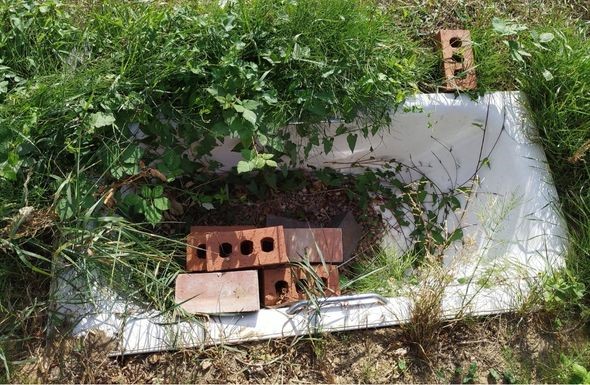
Pond in progress...
More ideas for making your allotment a wildlife haven
- Put away the pesticides and look into natural ways to protect your crops from pests such as companion planting
- Create habitats for wildlife such as bee, bat and bird boxes, bug hotels, hedgehog homes, log and stone piles and compost heaps
- Leave out bowls or containers with excess water
- Leave some fruit that has already fallen to the ground or doesn’t look appealing from a human point of view
- Make sure that your allotment has plenty of “wildlife corridors”
- Leave unmown, grassy areas for insects and plant flowers for pollinators in addition to fruit and vegetables
Find more inspiration on how you can take action for wildlife in your Naturespace here.
Is wildlife welcome in your allotment? Share your tips and stories with our Naturehood community on Facebook.

Wildlife-accessible compost heap
